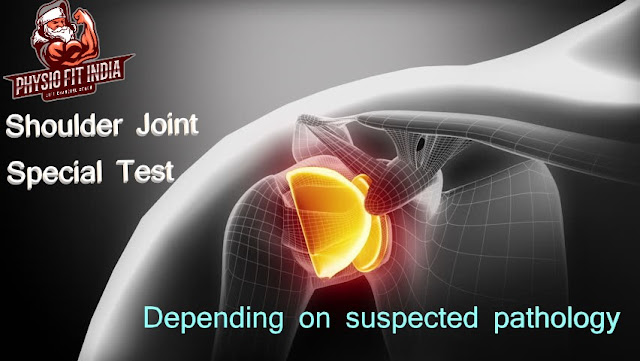Tests for Anterior Shoulder instability
Andrews' Anterior Instability Test.
⏩The patient lies supine with the shoulder abducted 130° and
laterally rotated 90°.
⏩The examiner stabilizes the elbow and distal humerus with
one hand and uses the other hand to grasp the humeral head and lift it forward ,
A reproduction of the patient's symptoms gives a positive test for anterior
instability. If the examiner hears a clunk.
an anterior labral tear may be present. This test is a modification of the load and shift test.
Anterior Drawer Test of the Shoulder.
⏩The patient lies supine.
⏩The examiner place the hand of the
affected shoulder in the examiner's axilla, holding the patient's hand with the
arm so that the patient remains relaxed.
The shoulder to be tested is abducted between 80° and 120°,
forward flexed up to 20°, and laterally rotated up to 30°.
The examiner then
stabilizes the patient's scapula with the opposite hand, pushing the spine of
the scapula forward with the index and middle fingers.
The examiner's thumb
exerts counterpressure on the patient's coracoid process. Using the arm that
is holding the patient's hand, the examiner places his or her hand around the
patient's relaxed upper arm and draws the humerus forward.
The movement may be accompanied by a click, by patient apprehension, or both. The amount of movement available is compared with that of the normal side.
A positive test indicates anterior instability
depending on the amount of anterior translation.
The click may indicate a labral tear or slippage of the
humeral head over the glenoid rim. This test is a modification of the load and
shift test.
Anterior Instability Test (Leffert's Test).
⏩ The exam stands behind the shoulder being examined
while the patient sits.
⏩The examiner places his or her near hand over the
shoulder so that the index finger is over the head of the humerus anteriorly
and the middle finger is over the coracoid process.
⏩The thumb is placed over
the posterior humeral head.
The examiner's other hand grasps the patient's
wrist and carefully abducts and laterally rotates the arm
Normally, the two fingers remain in the same plane. With
a positive test, when the arm is returned to the starting position, the index
finger returns to the starting position as the humeral head glides backward.





Thank you so much you are doing a great job. Your each and every update is very helpful
ReplyDeletePost a Comment
If you have any doubts any queries so contact me on social media account and send mail